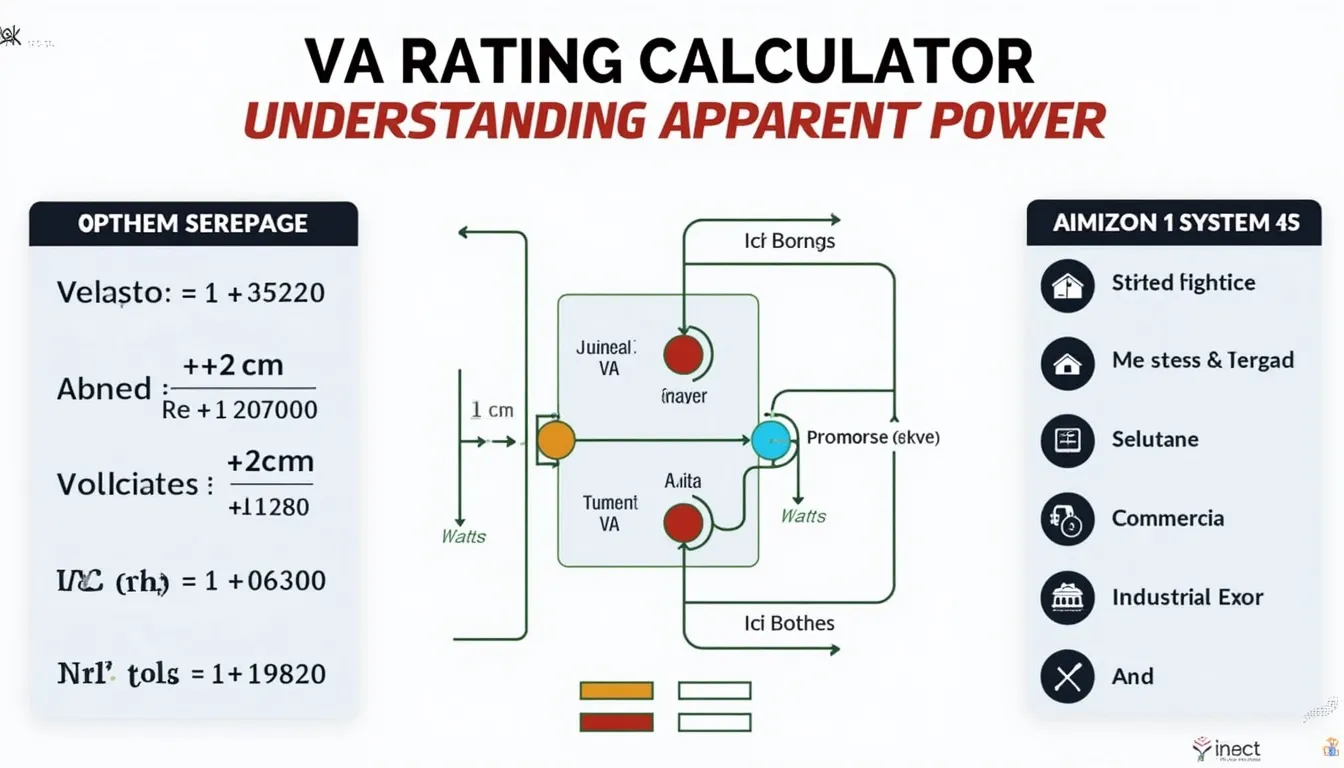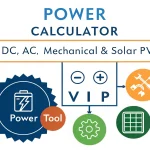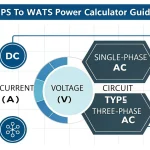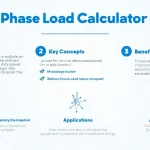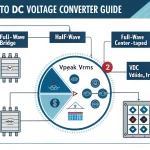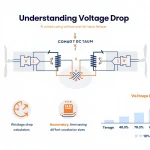Is this tool helpful?
How to use the tool
1 Enter voltage (V)
Type the line voltage of your circuit. Examples: 208 V for commercial lighting, 480 V for industrial motors.
2 Enter current (A)
Provide the load current. Examples: 12.5 A for a rooftop unit, 65 A for a small welding set.
3 Select phase type
- Single-phase for most homes and light commercial circuits.
- Three-phase for large HVAC, elevators, and plants.
4 (Optional) Power factor
Enter a value between 0 and 1. Typical: 0.97 for LED drivers, 0.80 for induction motors.
5 Read your results
- Apparent power (VA)
- Real power (W) when power factor is supplied
Formulas used
Single-phase:
$$VA = V \times I$$Three-phase:
$$VA = rac{\sqrt{3}\,V\,I}{1}$$Real power when power factor is known:
$$P = VA \times PF$$Example 1 — single-phase
- V = 208 V
- I = 12.5 A
- PF = 0.92
$$VA = 208 \times 12.5 = 2600 \text{ VA}$$
$$P = 2600 \times 0.92 = 2392 \text{ W}$$
Example 2 — three-phase
- V = 415 V
- I = 32 A
- PF = 0.85
$$VA = 1.732 \times 415 \times 32 = 22\,989 \text{ VA}$$
$$P = 22\,989 \times 0.85 = 19\,541 \text{ W}$$
Quick-Facts
- U.S. residential branch circuits are 120 V single-phase split-phase (U.S. NEC 2023).
- √3 = 1.732 is mandated in IEC 60038 voltage standards (IEC 2019).
- Typical motor power factor: 0.8-0.95 (ABB Motor Guide 2020).
- Transformers are sized in kVA, not kW (Schneider “Installation Guide” 2022).
- IEEE Std 141 advises a 25 % spare capacity for future load growth (IEEE 1993).
FAQ
What is apparent power?
Apparent power is the product of RMS voltage and current in an AC circuit, expressed in volt-amperes (VA) (IEC 60050).
Why does three-phase use √3?
The 120° phase shift makes the vector sum of phase voltages equal √3 times one phase voltage (IEC 60038).
When are VA and watts equal?
They match only at unity power factor; resistive heaters approach 1.0 PF (DOE “Electric Heating” 2021).
How do I find power factor?
Measure watts and VA with a power analyzer; divide watts by VA (Fluke Application Note 2022).
Can the calculator handle DC?
No. DC systems use P = V × I in watts; VA rating is AC-specific (IEEE Std 946-2020).
How often should I recalculate VA?
Recompute after adding loads or annually for compliance reviews (NEC Article 220 2023).
What margin should I add to equipment sizing?
Add 25 % spare capacity for future growth, per IEEE Std 141 recommendations (IEEE 1993).
Does low power factor waste energy?
Low PF raises current, increasing conductor losses and utility penalties (EPRI PF Handbook 2020).
Important Disclaimer
The calculations, results, and content provided by our tools are not guaranteed to be accurate, complete, or reliable. Users are responsible for verifying and interpreting the results. Our content and tools may contain errors, biases, or inconsistencies. Do not enter personal data, sensitive information, or personally identifiable information in our web forms or tools. Such data entry violates our terms of service and may result in unauthorized disclosure to third parties. We reserve the right to save inputs and outputs from our tools for the purposes of error debugging, bias identification, and performance improvement. External companies providing AI models used in our tools may also save and process data in accordance with their own policies. By using our tools, you consent to this data collection and processing. We reserve the right to limit the usage of our tools based on current usability factors.
